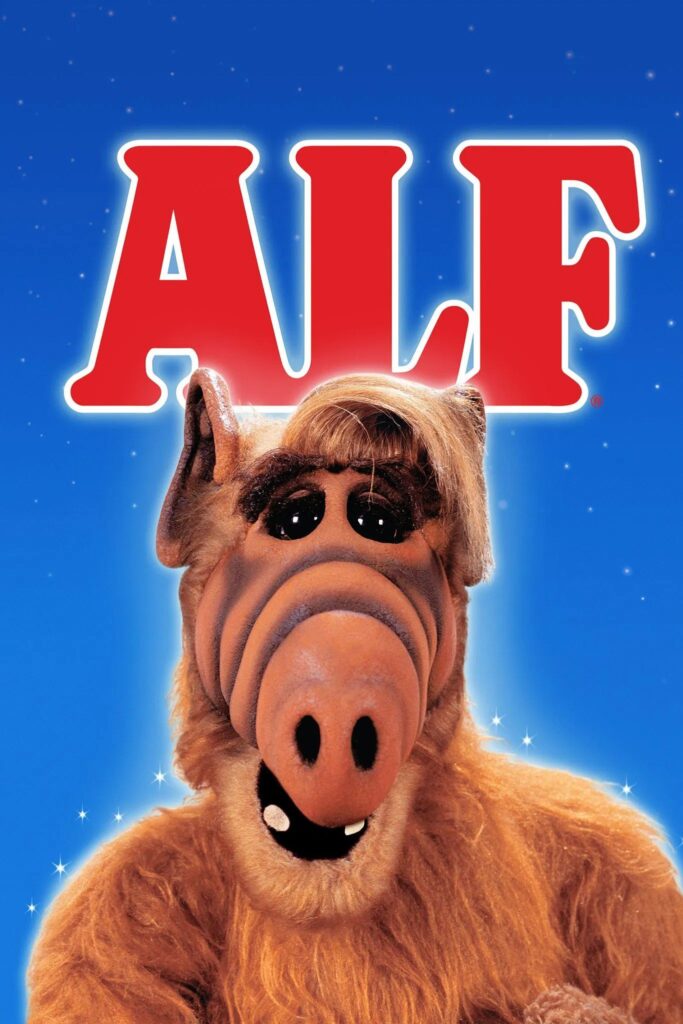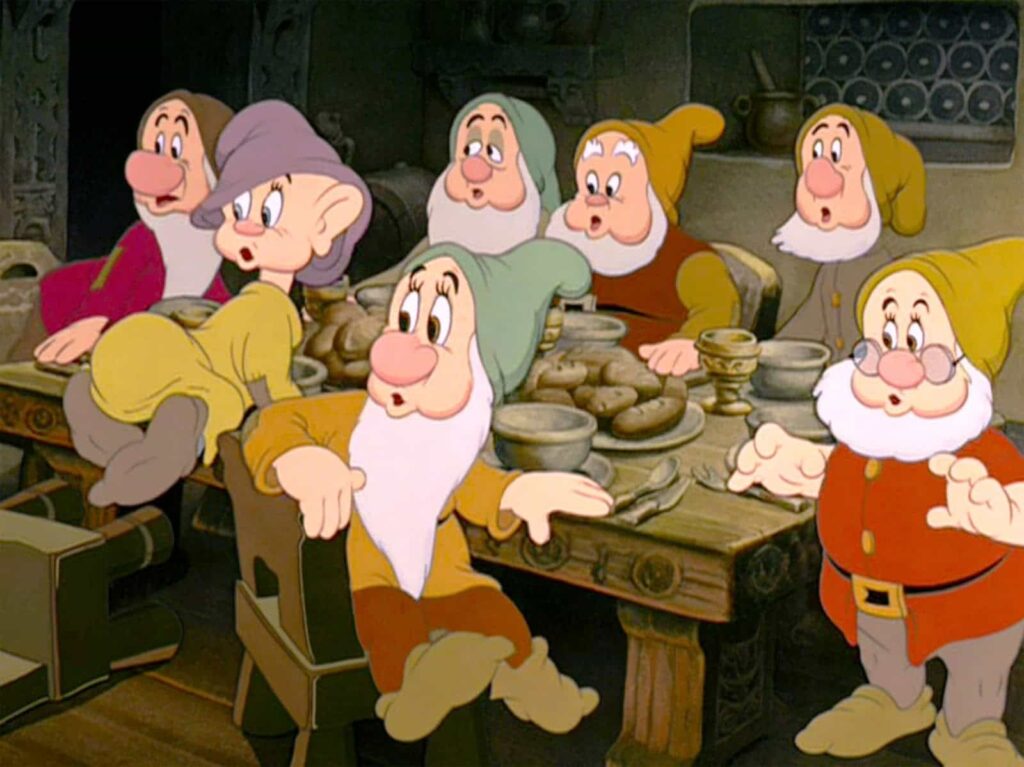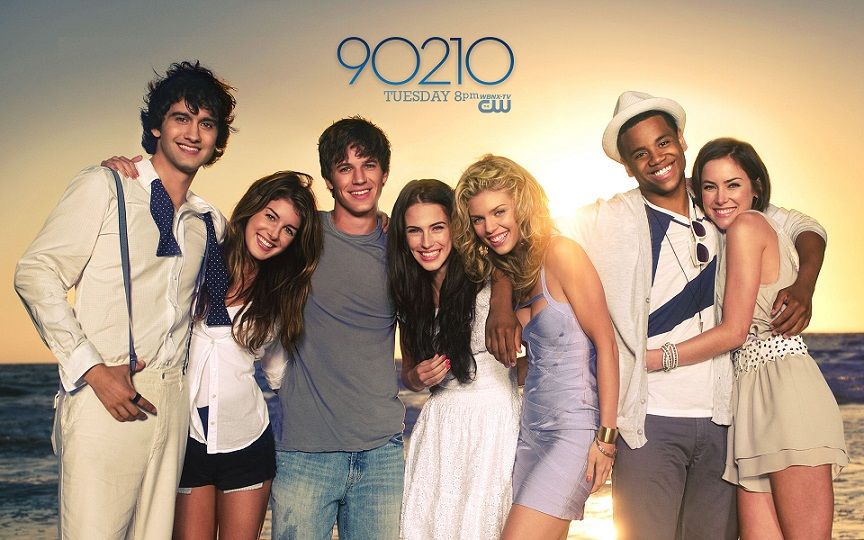
The 1980s: a decade synonymous with big hair, bold fashion, and a television landscape that shaped generations. From the thrilling exploits of *Knight Rider*’s talking car to the laugh-out-loud antics of *ALF*, certain shows have become indelible parts of our collective memory, icons that still resonate today. Yet, beyond these household names, the small screen was also a vibrant laboratory of innovation, churning out series that dared to “break new ground” in ways that were often ahead of their time. Many of these ambitious, experimental ventures, despite their forward-thinking concepts and undeniable creativity, found themselves swept into the dustbin of pop culture history, largely forgotten by mainstream audiences.
But what truly makes a show “groundbreaking”? It’s a powerful adjective, reserved for something “completely new, highly innovative, and represents a significant departure from previous forms, methods, or ideas.” As the very definition suggests, it’s about something that literally “breaks new ground,” forging a new path or establishing a foundation for others to build upon. These aren’t minor improvements or slight changes; a truly groundbreaking work implies “a major, transformative impact,” introducing a novel way of doing or thinking about things that profoundly changes how things were perceived or created before. It’s typically used for significant artistic works or technological advancements that have a lasting influence.
Today, we’re embarking on a fascinating, nostalgic journey to unearth nine of these unsung heroes – ’80s TV shows that, despite their often-short runs or eventual cult status, were undeniably groundbreaking for their time. They pushed technological boundaries, challenged narrative conventions, explored complex social dynamics, and even predicted future societal shifts, leaving a legacy far greater than their initial viewership numbers might suggest. Prepare to rediscover the innovative spirit of ’80s television and appreciate the forgotten gems that paved the way for so much of what we enjoy today!

1. **Manimal**In the heady days of 1983, when network television was still the undisputed king, NBC gambled on a concept so wild, so audacious, it could only have sprung from the creative ferment of the ’80s: “Manimal.” This peculiar series centered on Dr. Jonathan Chase, a professor with an extraordinary secret – the ability to transform into any animal at will. He wasn’t just a party trick; Chase, played by Simon MacCorkindale, teamed up with Detective Brooke McKenzie (Melody Anderson) and his friend Tyrone Earl (Michael D. Roberts) to tackle “cases that had regular cops scratching their heads,” injecting a fantastic element into the familiar crime procedural genre. The sheer premise of a human literally morphing into various creatures to solve mysteries was, by its very nature, “a significant departure from previous forms,” setting it apart from typical police dramas.
The true genius and “groundbreaking” quality of *Manimal*, however, resided not just in its quirky concept, but in the astounding visual effects that brought Dr. Chase’s transformations to life. In an era predating sophisticated computer-generated imagery, “the transformation scenes? Pretty impressive for 80s TV – Stan Winston (the effects wizard) and his team created them without fancy CGI.” This was a monumental technical achievement, representing the absolute pinnacle of practical effects work on the small screen. The meticulous craftsmanship involved in these sequences showcased an innovative commitment to visual storytelling, pushing the boundaries of what was thought possible for television production at the time. Each morph was a mini-masterpiece, meticulously crafted to be seamless and believable.
Despite its visual pioneering, *Manimal* struggled to find a foothold. “Sadly, the show got dumped into the Friday night death slot against some heavy hitters and tanked in the ratings. NBC pulled the plug after just eight episodes.” A swift and unceremonious end, indeed. Yet, the series’ brevity belies its profound impact on the craft of visual effects. The context explicitly highlights that “those groundbreaking practical effects sequences influenced creature transformations across film and television for years before digital morphing became the industry standard.” It literally “created a new path or foundation” for how fantastical changes could be depicted on screen, influencing countless subsequent productions and setting a high bar for physical effects artists.
*Manimal* demonstrated that television could aspire to cinematic levels of on-screen magic, showcasing an inventive spirit that dared to challenge technical limitations. Its practical effects were a “significant invention” within the realm of television, demonstrating how innovation doesn’t always guarantee immediate commercial success but can leave an indelible mark on an industry. For a show that lasted only eight episodes, its legacy as a technical pioneer truly cements its place as a groundbreaking, albeit largely forgotten, piece of 80s TV history, a testament to the power of imaginative visual design.

2. **Automan**Step back into 1983, a time when personal computers were just beginning to enter homes, and the very concept of digital technology felt like genuine magic. Capitalizing on this burgeoning fascination, “Automan” presented a dazzling premise that was truly ahead of its time: “police computer geek Walter Nebicher, who creates a holographic superhero to fight bad guys regular cops couldn’t touch.” This wasn’t just a novel idea; it was a “groundbreaking achievement” that merged the burgeoning world of computing with classic law enforcement narratives, creating something “completely new.” Chuck Wagner, resplendent in a glowing blue suit, embodied the digital hero Automan, while Desi Arnaz Jr. played his brilliant, albeit often flustered, human creator.
Visually, *Automan* was a spectacle that defined a new aesthetic for television. “They had this cute little floating dot called Cursor that zipped around making digital cars and gadgets whenever needed. The whole show looked like ‘Tron’ had a baby with a cop show – all blue neon effects and digital weirdness.” This distinctive style, bursting with luminous lines and digital constructs, was “highly innovative” and “a significant departure from previous forms” of television drama. It didn’t just tell a story about technology; it *showed* technology in a way that had never been seen on the small screen, immersing viewers in a truly futuristic, if somewhat stylized, digital world. The effects weren’t just decorative; they were integral to Automan’s very existence and capabilities.
Despite its impressive visual flair and inventive concept, *Automan* faced an uphill battle. Much like *Manimal*, “it got crushed in the ratings war,” unable to compete with the established giants of the era. However, *Automan*’s true groundbreaking quality lies not in its viewership numbers, but in its astonishing prescience. The context notes with remarkable accuracy: “Decades before we all created digital avatars and lived partially online, Automan envisioned a world where digital entities could cross into physical reality – eerily predicting our increasingly blurred digital-physical existence.” This predictive foresight is a hallmark of “groundbreaking” work, as it introduced “a new way of doing or thinking about things” that would profoundly influence future technological developments and societal interactions.
The themes explored by *Automan* – digital consciousness, artificial intelligence, and the interaction between virtual and physical realities – are more relevant today than ever. In 1983, these concepts were largely the domain of science fiction novels, not primetime television. *Automan* was a “groundbreaking” “artistic work” that used pop culture entertainment to explore complex philosophical questions about the future of technology and humanity. It truly laid a “new path or foundation” for envisioning our increasingly digital lives, cementing its status as a visionary, albeit overlooked, piece of ’80s television.
3. **Small Wonder**In 1985, a seemingly lighthearted sitcom debuted with a premise that, beneath its charmingly cheesy exterior, dared to delve into profound questions about identity, family, and the very essence of being human. “Imagine bringing home a robot and pretending it’s your daughter – that’s the bonkers premise ‘Small Wonder’ delivered in ’85.” This was the curious setup for the Lawson family’s suburban life, where robotics whiz Ted Lawson (Dick Christie) secretly builds V.I.C.I. (Voice Input Child Identicant) and, for reasons both comedic and heartfelt, integrates her into their lives as his daughter “Vicki.” Tiffany Brissette’s deadpan, monotone portrayal of Vicki, complete with her ability to casually bend steel and lift furniture, became an instant, albeit unconventional, television icon.
The show, also starring Marla Pennington as the mom, Joan, and Jerry Supiran as their flesh-and-blood son, Jamie, largely revolved around the perpetual “don’t let the neighbors figure out she’s a robot!” hijinks. This constant comedic tension provided ample fodder for its four successful seasons in syndication, despite critics who “absolutely hated it.” The show’s ability to connect with an audience, even in the face of critical disdain, speaks volumes about its unexpected resonance and its novel approach to family dynamics. It was “a significant departure from previous forms” of family sitcoms, introducing a fantastic element that was central to every storyline.
Where *Small Wonder* truly became “groundbreaking” was in its subtle, yet pervasive, exploration of philosophical dilemmas that have only grown more pertinent with time. “For all its cheesy 80s trappings, Small Wonder asked questions about consciousness, family, and what defines humanity that feel startlingly relevant in our current era of sophisticated AI assistants and robots.” This wasn’t merely a sitcom; it was an “artistic work” that used the accessible format of a family comedy to grapple with complex ethical and existential questions surrounding artificial intelligence, human-robot interaction, and the nature of personhood. It introduced “a new way of doing or thinking about things” in mainstream entertainment.
The concept of an artificial being integrated into a human family, learning emotions, and navigating social norms was a remarkably innovative concept for a primetime television series in the mid-80s. *Small Wonder* didn’t shy away from depicting Vicki’s struggles to understand human idioms, her developing capacity for empathy, and the unique challenges her existence posed to the Lawson family’s identity. This show, with its robot daughter and suburban antics, carved out a unique space in television history by tackling future-forward ideas with a charming, if sometimes silly, innocence, laying a subtle “foundation for others” to explore these themes more seriously in subsequent decades.
Read more about: Angelina Jolie Beams with Pride: Inside Zahara’s Thriving College Life, Activism, and Red Carpet Milestones

4. **The Powers of Matthew Star**Before the CW network became synonymous with angsty, superpowered teens, NBC was already experimenting with the formula back in 1982 with “The Powers of Matthew Star.” This ambitious show centered on an alien prince, Matthew Star, who was hiding on Earth as a seemingly ordinary high school student. Played by Peter Barton, Matthew was secretly developing telekinetic powers, navigating both typical adolescent drama and the looming threat of intergalactic assassins. It was a concept truly “ahead of its time,” attempting to blend the cosmic scale of science fiction with the relatable, everyday struggles of teenage life.
The series boasted an unexpected co-star in Louis Gossett Jr., who portrayed Walt Shepherd, Matthew’s alien protector disguised as a teacher. Gossett Jr. famously took on this role right after winning an Oscar for “An Officer and a Gentleman,” showcasing his remarkable range and lending significant gravitas to the show’s fantastical premise. The dynamic between the powerful, world-weary protector and his inexperienced, superpowered ward was a compelling central relationship, aiming to ground the otherworldly plots in something emotionally resonant. This pairing added a layer of mentorship and guardianship that elevated it beyond a simple teen drama.
However, “The Powers of Matthew Star” was plagued by production woes and a confused identity. Mid-season, the show underwent a bizarre shift, largely abandoning its high school setting for more action-packed adventures, diluting its initial unique blend. Adding to the difficulties, Peter Barton suffered serious burns in an on-set accident, halting production for weeks and undoubtedly impacting the show’s already precarious trajectory. These internal struggles made it challenging for the series to find its rhythm and fully realize its groundbreaking potential.
Despite its rocky, short-lived run, “The Powers of Matthew Star” was a pivotal, albeit flawed, experiment in television history. The explicit context points out that “the alien-teenager-with-powers formula would eventually become TV gold, with Matthew Star serving as an early, flawed experiment in mixing cosmic threats with high school hallway drama.” It truly laid a “new path or foundation” for a genre that would later blossom into hugely successful franchises, proving that sometimes, even a show that doesn’t quite hit the mark can still “break new ground” and influence future pop culture hits.
Read more about: Beyond the Hype: 14 Underrated Horror Movies That’ll Blow Your Mind (Seriously!)

5. **Tucker’s Witch**In 1982, CBS conjured up “Tucker’s Witch,” a series that delightfully explored the question: what if your spouse’s “woman’s intuition” was actually genuine psychic power? This charmingly offbeat premise introduced us to Amanda Tucker, a wife with bona fide supernatural abilities, and her husband Rick, a traditional private detective. While Amanda’s hunches often proved invaluable in solving cases, they also had a tendency to go hilariously haywire, landing the couple in predicaments that mere mortal detectives could only dream of. Catherine Hicks, as Amanda, brought a delightful blend of earnestness and mystical flair, perfectly balancing the supernatural with the mundane.
Tim Matheson, as the eye-rolling but ultimately supportive husband Rick, provided the grounded counterpoint to Amanda’s magical exploits. He preferred old-school detective work, making their crime-solving dynamic a fascinating blend of deduction and divination. The show gracefully navigated between spooky case-of-the-week plots, which benefited from Amanda’s unique perspective, and the witty, relatable banter of a married couple. This unique blend created a “significant departure from previous forms” of detective shows, injecting a personal, fantastical element directly into the procedural framework, enriching the narrative possibilities.
A fun, albeit little-known, fact about the show is its original title: “The Good Witch of Laurel Canyon.” CBS executives, however, got cold feet about the overtly magical title and opted for the more subdued “Tucker’s Witch.” Despite having two talented leads and a fresh concept, the series struggled in the cutthroat ’80s ratings wars and unfortunately “got clobbered in the ratings,” vanishing after just 12 episodes. Its brevity, however, does not diminish its innovative spirit or its lasting influence on genre blending.
“Tucker’s Witch” was “groundbreaking” because it established a clear template for future shows that would blend domestic relationships with paranormal crime-solving. The context notes that it “established the template for blending domestic relationships with paranormal crime-solving that later shows would refine into hit formulas.” It proved that a series could successfully weave together marital dynamics, episodic mysteries, and a fantastical element like psychic powers, carving out a new subgenre that has been iterated upon countless times, making it a true, albeit forgotten, trailblazer of ’80s television.

6. **Hardcastle and McCormick**For those who yearned for justice that sidestepped legal loopholes, “Hardcastle and McCormick” delivered a satisfying punch when it roared onto ABC in 1983. This show presented a truly “groundbreaking” pairing: a cantankerous retired judge, Judge Milton C. Hardcastle, who teams up with a street-smart ex-con, Mark McCormick, to bring criminals to justice whom the system couldn’t touch. Brian Keith brought his signature gruff, no-nonsense gravitas to the role of the judge, embodying a figure of stern, unwavering principle.
Daniel Hugh Kelly played McCormick, the reluctant ex-car thief who, when not chasing down bad guys, would much rather be behind the wheel of a race car. Their dynamic was pure “odd couple” gold, filled with sparks, disagreements, and an underlying current of respect. But perhaps their most iconic co-star was the Coyote X, a custom fiberglass sports car that, in its unique design, truly stood out on the small screen. This vehicle became a character in itself, embodying the show’s blend of action and individuality, and making it “a significant departure from previous forms” of typical action series vehicles.
Created by the prolific TV legend Stephen J. Cannell, known for his knack for high-octane action, “Hardcastle and McCormick” was more than just car chases and fistfights. The series surprisingly managed to develop “genuine emotional depth between its leads.” What started as a partnership born of circumstance evolved into something resembling a surrogate father-son relationship, adding layers of heart to the action. Initially, the show bravely held its own against the ratings behemoth “The A-Team,” a testament to its compelling characters and engaging storylines.
This genuine emotional evolution between the two main characters truly sets “Hardcastle and McCormick” apart, making it “groundbreaking” for its era. While many action shows focused solely on the spectacle, this series “managed to develop genuine emotional depth between its leads, evolving from reluctant partners to something resembling father and son.” This nuanced character development was “a new way of doing or thinking about things” for action dramas, proving that even amidst explosions and car stunts, profound human connections could, and should, drive the narrative, paving the way for more character-driven action series in the future.
Read more about: Steve Lawrence: Remembering an Entertainment Icon’s Illustrious Life, and His Final Battle with Alzheimer’s Disease

7. **The Charmings**Who among us hasn’t pondered how beloved fairy tale characters would cope with the bewildering array of modern conveniences? ABC’s “The Charmings,” which debuted in 1987, playfully answered this very question with a concept that was undeniably “groundbreaking” for its time. Thanks to a hilarious, botched spell cast by the Evil Queen, Snow White, Prince Charming, and the wicked monarch herself find themselves unceremoniously dumped into Reagan-era Burbank, California, with no magical portal back to their enchanted kingdom.
The show masterfully mined its comedic gold from the sheer culture shock experienced by these medieval royals. Watching Christopher Rich’s hilariously clueless Prince Charming grapple with a microwave, or Judy Parfitt’s scenery-chewing Evil Queen forced to use her magic to navigate shopping malls and VCRs, provided endless laughs. Snow White, famously played by two different actresses during its brief run, struggled to adapt to suburban life, creating a constant stream of “fish-out-of-water” humor that felt fresh and innovative for a family sitcom.
“The Charmings” was truly “a significant departure from previous forms” of comedy, as it used the fantastical premise not just for one-off gags, but as the very engine of its narrative. The humor wasn’t just about their magical abilities, but about the profound clash of eras and expectations. It explored the mundane aspects of contemporary life through the wide-eyed, often bewildered, lens of characters from a different age, creating “a new way of doing or thinking about things” in sitcom storytelling by focusing on radical cultural displacement.
Despite its innovative concept and charming performances, “The Charmings” faced an insurmountable obstacle: it was scheduled directly against the ratings behemoth “The Cosby Show,” effectively sealing its fate. Lasting a mere 21 episodes across two seasons, it was swiftly canceled. However, its brief existence left an indelible mark on pop culture. The context explicitly states that “this short-lived comedy’s DNA lives on in hugely successful shows like ‘Once Upon A Time’ and countless movies that drop magical characters into contemporary settings.” It was a true pioneer, proving that classic tales could be given a “groundbreaking” modern twist, paving the way for a beloved genre.
Read more about: Mind-Blown! Things Only Adults Truly Notice When Rewatching Your Favorite Disney Princess Movies

8. **Our House**In 1986, NBC debuted “Our House,” a family drama that dared to delve into much deeper, more poignant themes than its sitcom counterparts of the era. The premise was steeped in emotional complexity: after a devastating loss, Gus Witherspoon’s son dies, leading his widow, Annie, and her three children to move in with Grandpa Gus. This multi-generational living arrangement naturally led to a rich tapestry of family conflicts, heartfelt bonding moments, and profound healing, marking “a significant departure from previous forms” of feel-good family programming.
Wilford Brimley, with his distinctive folksy charm and gravitas, brought Grandpa Gus to life, embodying a patriarch whose sternness was always tempered by an underlying love. Soap star Deidre Hall played the grieving daughter-in-law Annie, navigating her own pain while trying to raise her children under her father-in-law’s roof. The young cast included a pre-“90210” Shannen Doherty as the oldest granddaughter, Lynn, alongside Chad Allen and Keri Houlihan as the younger siblings, forming a compelling ensemble that brought authentic family dynamics to the screen.
What made “Our House” truly “groundbreaking” was its willingness to confront genuinely heavy subject matter, a stark contrast to the often neatly resolved, lighthearted problems typical of 80s family shows. The series tackled issues like death, financial struggles, and the inevitable “your way is old-fashioned” generational arguments with a refreshing degree of nuance and emotional honesty. It wasn’t afraid to explore the messiness of grief and adjustment, providing a realistic portrayal of family life that was “a new way of doing or thinking about things” in the genre, moving beyond simplistic solutions.
Though it delivered consistently solid storytelling, “Our House” unfortunately found itself in a challenging time slot, unable to compete with the ratings juggernaut that was “60 Minutes.” Consequently, it wrapped after just two seasons. However, its legacy as a “groundbreaking” series endures, particularly in its prescient exploration of extended family living. Long before economic realities made multi-generational households a widespread necessity, “Our House” sensitively explored “the complex dynamics of extended family living with surprising nuance and emotional honesty,” laying a thoughtful foundation for future dramas that would address similar societal shifts. It showed that TV could be both comforting and deeply resonant, even when dealing with difficult truths.
Read more about: Angelina Jolie Beams with Pride: Inside Zahara’s Thriving College Life, Activism, and Red Carpet Milestones
These five shows, often overshadowed by their flashier or more enduring contemporaries, nonetheless represent a vital, “groundbreaking” chapter in the history of 1980s television. From early supernatural teen dramas and paranormal detective stories to emotionally complex multi-generational sagas and witty fairy-tale culture clashes, they each “broke new ground” in their own unique ways. They experimented with genre blending, pushed narrative boundaries, and explored themes that were well ahead of their time, laying the conceptual groundwork for many of the beloved pop culture hits we enjoy today. Rediscovering these forgotten gems offers a fascinating glimpse into the inventive spirit of an era, reminding us that true innovation doesn’t always come with instant accolades, but often leaves an indelible mark on the landscape of storytelling.




